Scouring Rush
Poisonous to horses when consumed.
- Horsetail (Equisetaceae family):
- Equisetum hyemale L.
- EPPO code:
- EQUHY
- Other names:
- Snake grass, bamboo weed
Species information
- Lifecycle:
- Perennial.
- Propagation:
- Reproduces by spores and most commonly by rhizomes.
- Emergence:
- Typically emerges from late April to early May.
- Habitat:
- Scouring rush is native to North America. It grows in dense patches, and prefers sun and wet or moist conditions, gravel, sandy or “mucky” soil.
- Competitiveness:
- No data exists on scouring rush’s competitiveness. It is rarely found in fields, but typically along field edges.
Identification clues
- Stem:
- Scouring rush is a leafless, bamboo-like plant. It has a single green (grey, olive to dark green), rough and hollow stem. Stiff and unbranched, it has multiple “joints” or nodes that segment the stem into several 2–4 cm long sections that bend and break apart easily. The stem grows between 20 and 150 cm tall. Sterile and fertile stems look alike; they are encircled by ash-coloured bands and have small ridges that run lengthwise down the stem.
- Spore-bearing cone:
- Scouring rush grows a spore-bearing cone at the tip of its stem. Usually black or white in colour, it is pointed and grows up to 2.5 cm long. The cones release spores in late spring to mid-summer.
- Roots:
- Extensive rhizome, fibrous secondary roots
Party time trivia
This primitive plant has a prehistoric look to it. The plant’s name comes from its historical use as a scrub for pots and pans, and also because it contains silica and was used as a polish to finish pewter, wood, ivory, silver and brass.
Often mistaken for
I know it's not Field horsetail because scouring rush is taller, lacks branches and resembles a green bamboo pole.
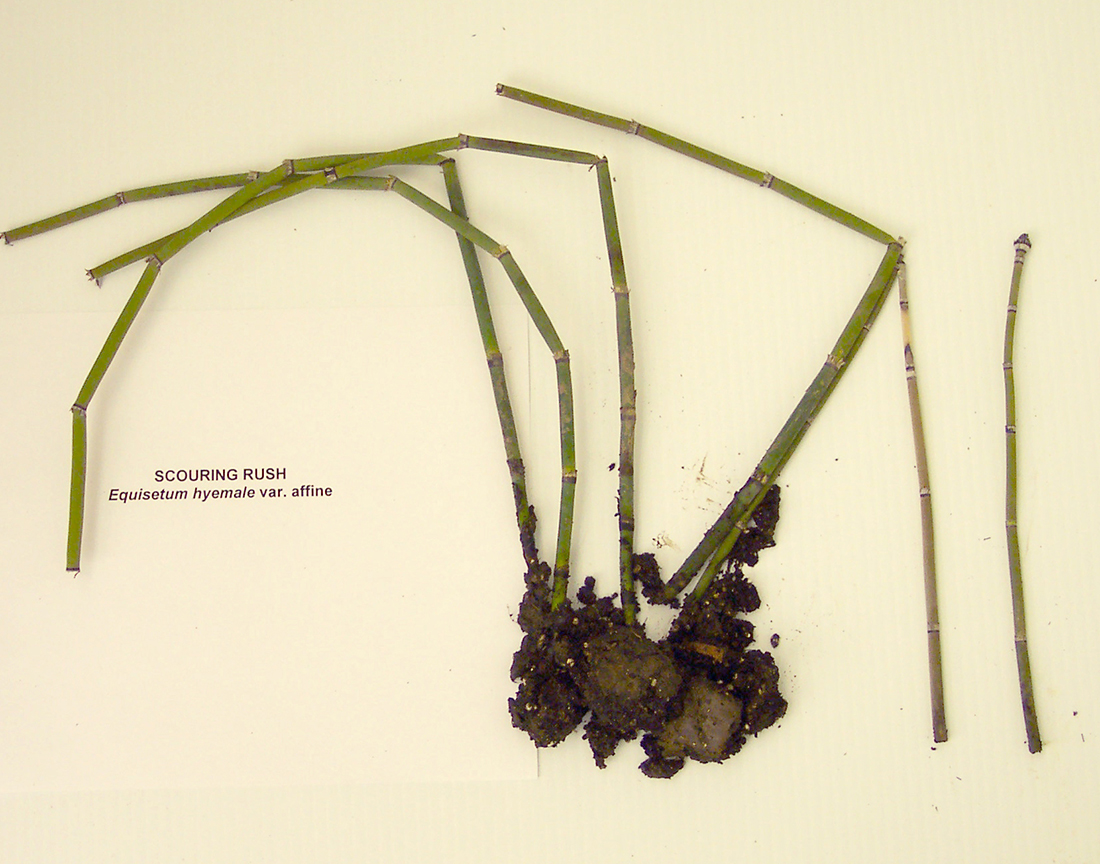
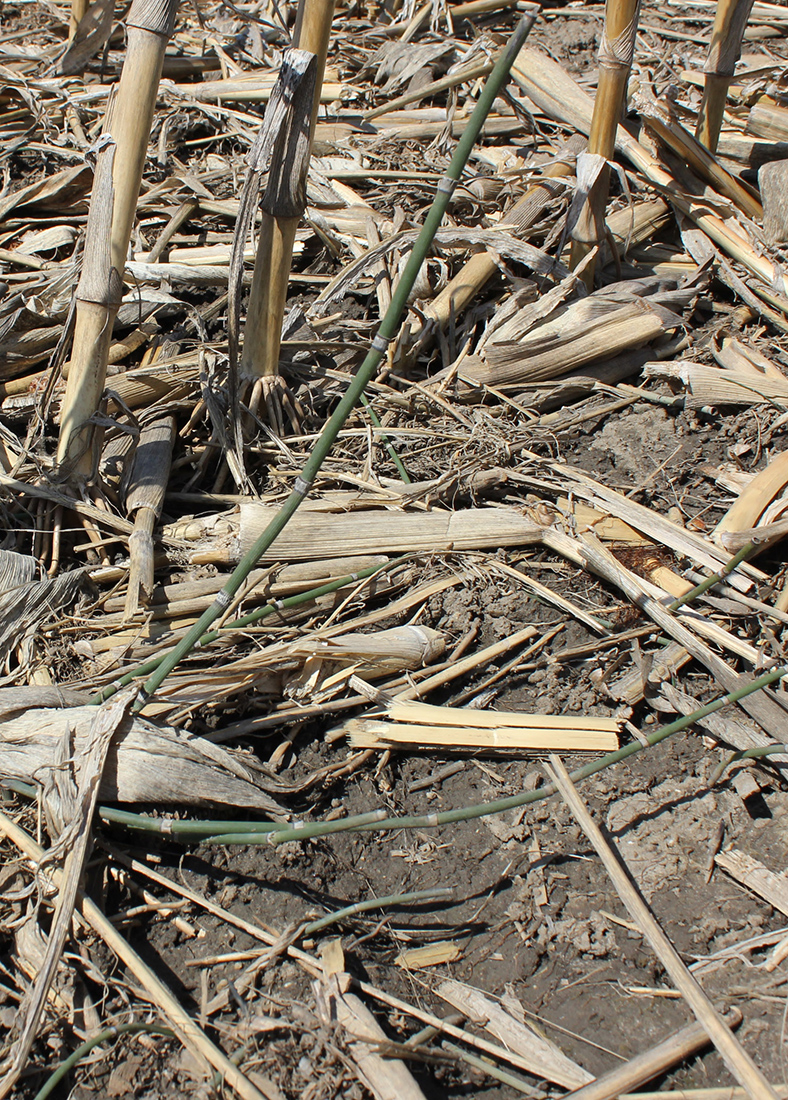
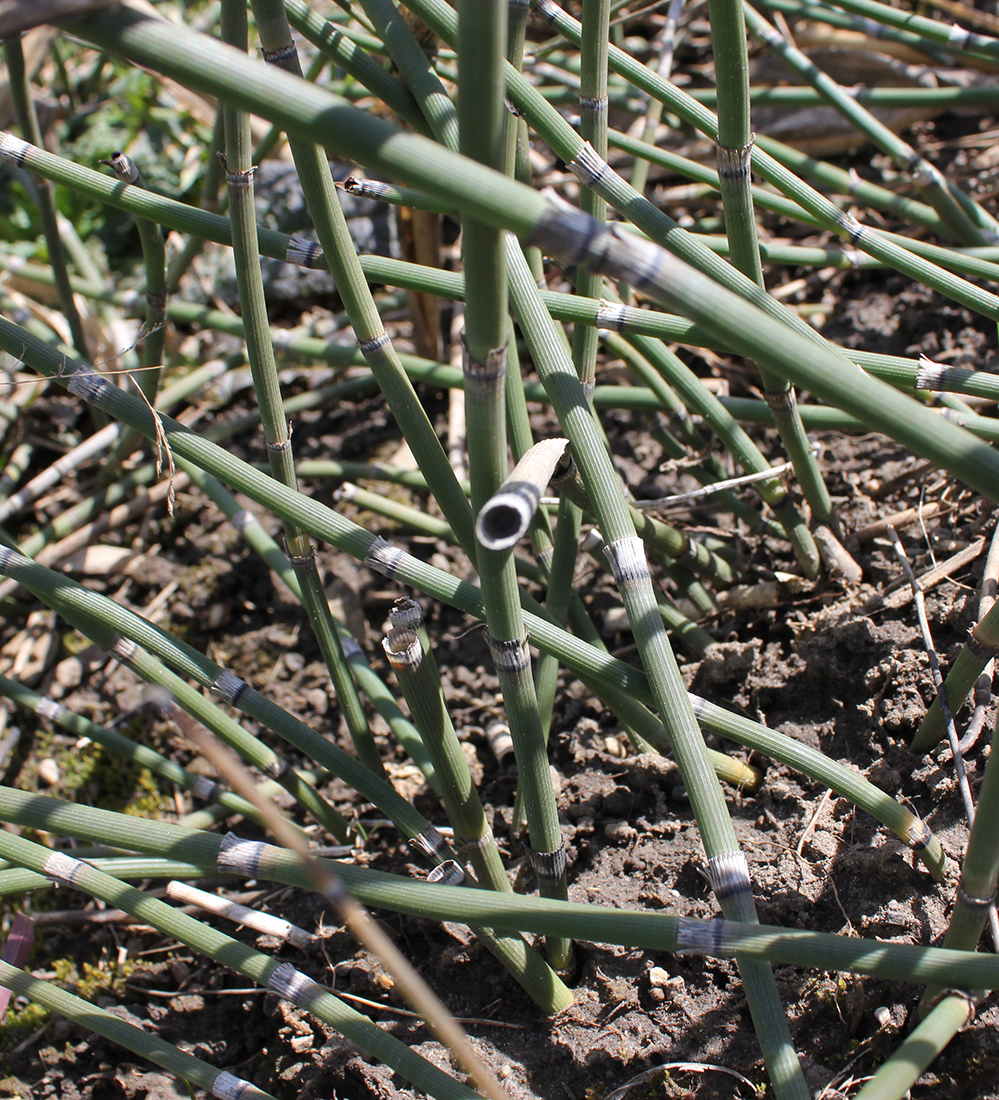
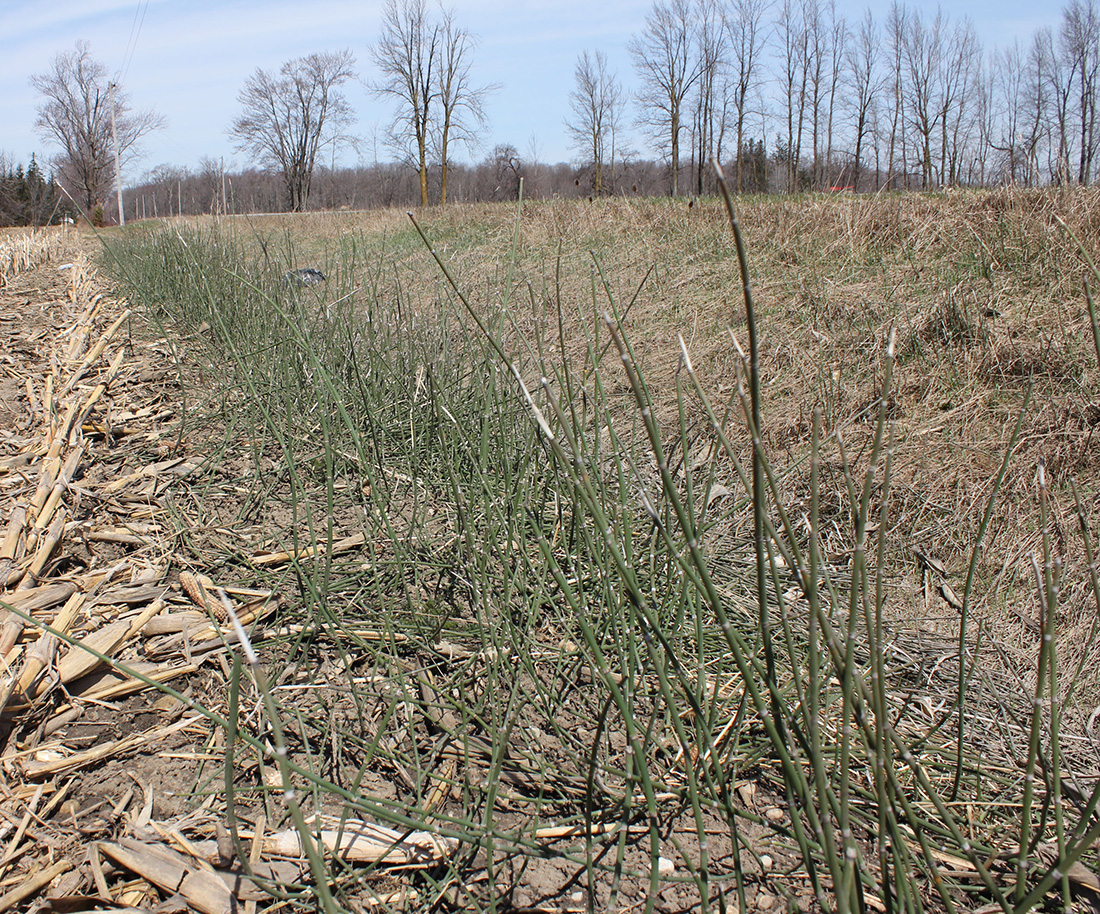
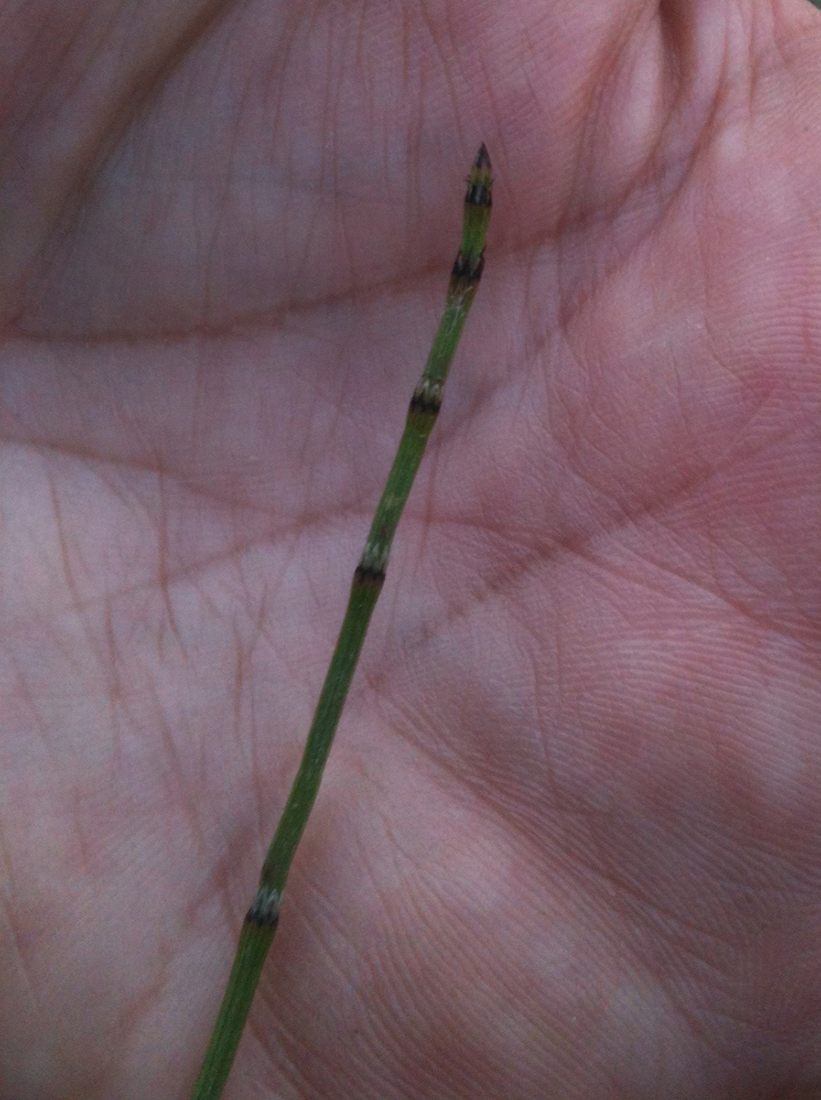
Updated: January 13, 2023
Published: January 13, 2023